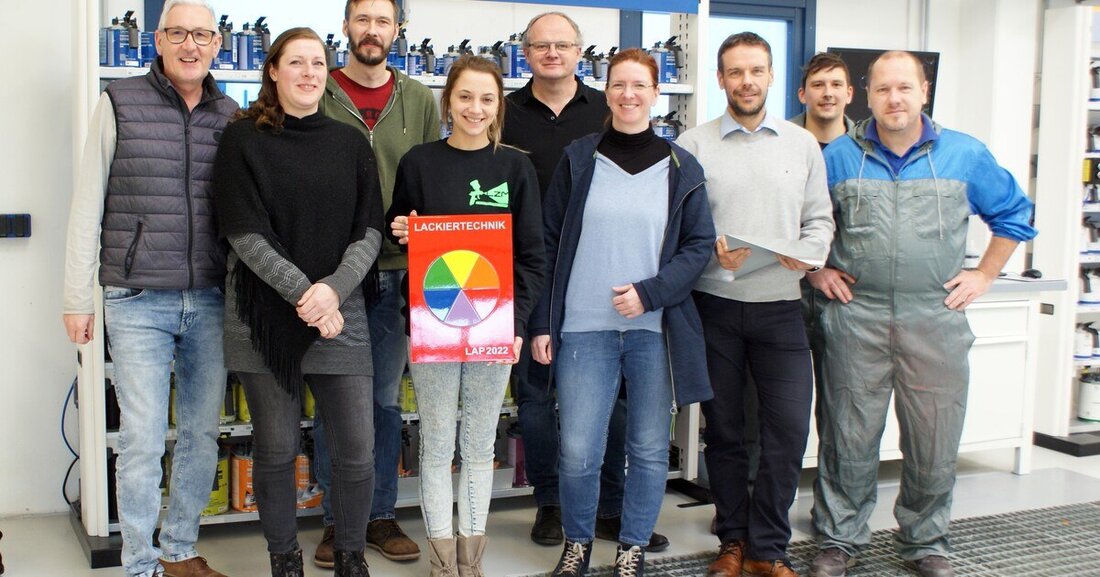New practical task for aspiring painters
The final exam for painting technicians has been revised. AkzoNobel has made its training center available for this purpose.

New practical task for aspiring painters

With the new year, the final exam for painting technicians will be revised and reissued nationwide. At the beginning of January, the examination committee for the painting trade met to develop a new practical test. Alexandra Pötsch, project manager at the Institute for Economic Educational Research (ibw) Vienna, was significantly involved in the conception on behalf of the LAP clearinghouse, which was set up by the Federal Ministry at the ibw in 2012 to ensure the quality of final apprenticeship examinations.
The seven-member working group of the examination committee spent a total of two days in the AkzoNobel training center in Elixhausen, where they compiled the requirements of the future practical task under the leadership of chairmen Manfred Schönegger and Peter Slama. "As in every technical profession, the painting trade is also subject to major changes. Modern technologies and work materials open up new possibilities, but at the same time they require special know-how. We also want to reflect this in the teaching and examination content and thereby continuously increase the level of training," explains Manfred Schönegger, explaining the new concept of the examination task.
The revision is also intended to meet the requirements of the Austrian National Qualifications Framework (NQF). Alexandra Pötsch, who is responsible for quality assurance of technical apprenticeships at the ibw Vienna, welcomes the examination committee's collaborative and constructive approach: "All participants are proven experts in their field and brought important experience to the development of the examination piece. In this way, the requirements could be realistically collected and formulated in a practical manner."
Lacquered plate with six color segments
Accordingly, the test model stipulates that the future test subjects produce a painted panel with six color segments. Various materials are used that must meet certain criteria in preparation and construction. During processing, basic skills such as repairing damage, sanding, gluing, color matching, digital color determination and paint construction are required. But precise work with an eye on the clock is also important. When designing the exam, we did everything we could to make the exam task high-quality, fair and attractive. Ultimately, we also want to strengthen interest and enthusiasm for the teaching profession. Because our apprentices of today are our experts of tomorrow. Personally, it gives me great pleasure to put the finishing touches on the rough diamonds and prepare them for the professional world,” says Daniel Kapeller, Sales Manager AkzoNobel Austria, who has been a member of the examination committee for many years together with his colleague Armin Krenn.
Alexandra Pötsch, who followed the development process of the exam model, coordinated the details of the task content with the participating team of experts directly on site. The committee then created the evaluation criteria. What happens next? "After approval by the team of experts, the new exam example is handed over to the social partners for assessment and final approval. Only when both the employer and employee sides find the exam example to be "good" does it receive the clearing house's seal of quality. The test run of the new test work is the heart of this multi-stage revision in this process. How often examination tasks have to be reissued varies greatly depending on the profession and needs," explains Alexandra Pötsch. For her, this process is an important measure to ensure and further advance the quality of training for future skilled workers.

 Suche
Suche
 Mein Konto
Mein Konto